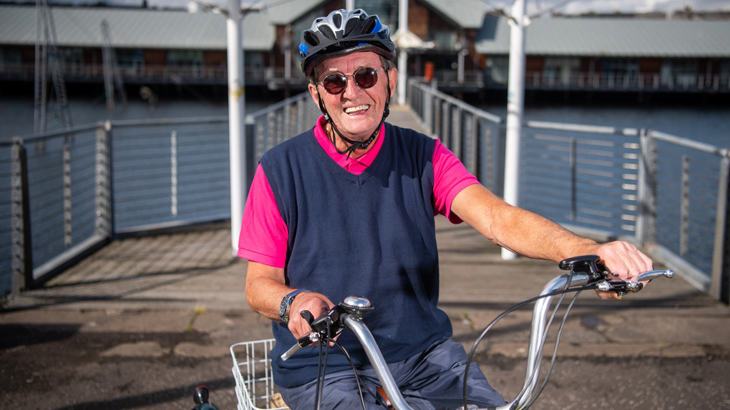Evidence shows that walking and cycling can play a vital role in supporting healthy life expectancy. Our Director of Insight, Andy Cope, explores the latest research on how safer walking and cycling infrastructure can improve the population's health and reduce inequalities.

New research shows that the construction of safe walking and cycling routes at scale can improve population health and reduce health inequalities.
It emphasises the importance of safe walking and cycling routes in supporting physical activity among disadvantaged groups.
The research by MRC Epidemiology Unit & Centre for Diet and Activity Research (CEDAR) at the University of Cambridge and the Centre for Public Health & Wellbeing at the University of the West of England is published in the Journal of Transport and Health.
Better routes support more physical activity
The findings are very clear that creating new walking and cycling routes or improving existing routes will support physical activity in groups for which exercise can fall below the recommended levels.
This includes supporting physical activity among older people, people living in deprived areas and people living with a disability or long-term illness.
A further important finding is that when walking and cycling routes are built or improved in areas where levels of walking and cycling are low, relative increases in levels of physical activity can be large.
This research is important because it spells out the role that walking and cycling can play in responding to Covid-19 and in addressing the wider ‘levelling-up’ agenda.

The recent landmark reports by the Institute of Health Equity (‘The Marmot Review – ten years on’ and ‘The Covid-19 Marmot Review’, both commissioned by the Health Foundation) spell out how walking and cycling can help address both health inequalities and pandemic response.
The ‘ten years on’ report spells out how improvements to life expectancy have stalled, and details how the health gap has grown between wealthy and deprived areas.
Increased investment is needed to address health inequalities
The Covid-19 report details how inequalities in social and economic conditions before the pandemic contributed to the high and unequal death toll from Covid-19.
And it sets out why investment in public health needs to be increased to mitigate the impact of the pandemic on health and health inequalities, and on the social determinants of health.
On walking and cycling:
"The provision of policies for equitable active travel such as cycling and walking is highly important … to reduce health inequalities; …active travel improves physical health and mental health as a result of the physical activity".
Walking and cycling play a vital role in increasing life expectancy
The new research shows that walking and cycling can play a vital role in supporting healthy life expectancy and narrowing health inequalities.
Active travel is also crucial to the ongoing Covid-19 response and could be key to leaving us better placed to address future health emergencies.
If we are serious about ‘levelling-up’, walking and cycling must be a priority investment area throughout the UK.
Research on the impact of building new walking and cycling routes
You can read the full paper, A natural experimental study of new walking and cycling infrastructure across the United Kingdom: The Connect2 programme on the Science Direct website.
The research is derived from the Connect2 programme and is conducted by members of the iConnect research consortium.
We secured £50 million of investment from the Big Lottery Fund (now The National Lottery Community Fund) in 2008.
Safe walking and cycling schemes were delivered in 84 locations UK-wide between 2009 and 2013.
We worked with dozens of stakeholders, including local government, statutory and non-statutory bodies and local community groups, to raise matched funding against the original award and deliver the schemes on the ground.
The overall investment in the Connect2 programme was £175 million.





